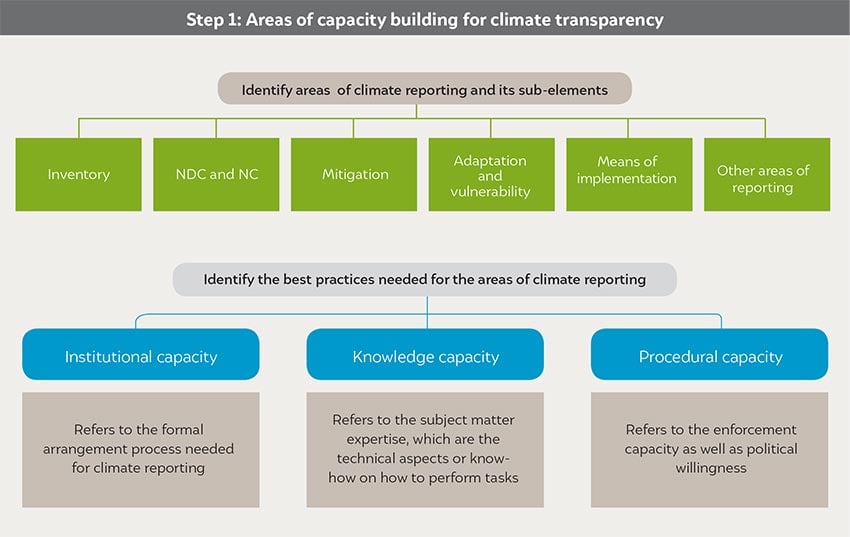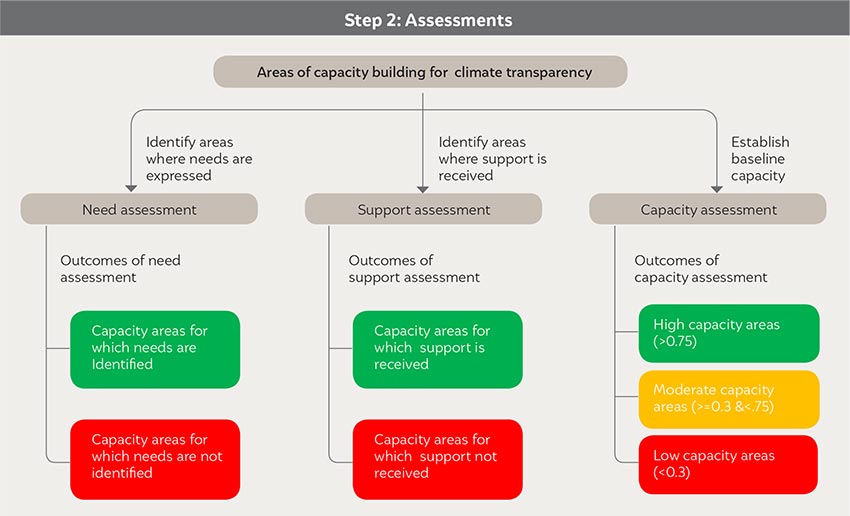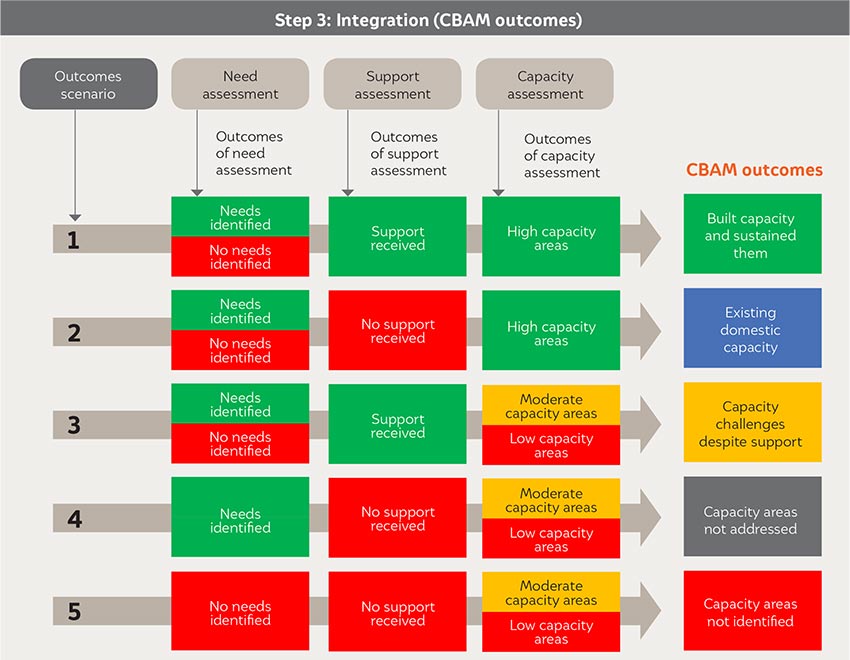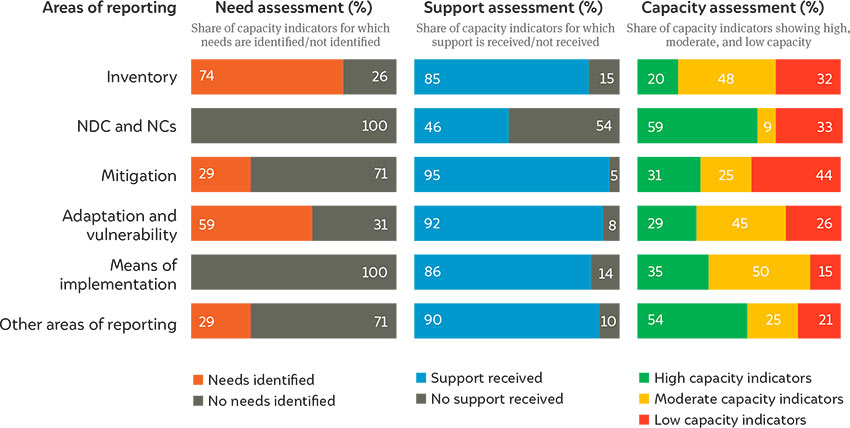Report
A Capacity Building Assessment Matrix for Enhanced Transparency in Climate Reporting
A Comprehensive Evaluation of Indian Efforts
Sumit Prasad, Vaibhav Gupta
September 2019 | Energy Transitions, International Cooperation
Suggested Citation: Prasad, Sumit, and Vaibhav Gupta. 2019. A Capacity Building Assessment Matrix for Enhanced Transparency in Climate Reporting: An India Assessment. New Delhi: Council on Energy, Environment and Water.
Overview
Transparency in climate actions and support is an important pillar on which climate negotiations rest. This study presents an assessment tool – Capacity Building Assessment Matrix (CBAM) – to help quantify capacity building efforts and the gaps therein, with regards to climate transparency. The assessment tool establishes countries’ baseline capacity, and focuses on understanding the gaps and mismatches between the capacity building needs identified within national contexts, and the support received to meet them. The study identifies the areas where India has built its capacity and the capacity areas where critical interventions are needed.
Capacity Building Assessment Matrix
- As developing countries lack sufficient resources to ensure enhanced climate reporting transparency, they find its implementation to be difficult.
- In an ideal system, developed countries would deliver support in close coordination with developing countries, which in turn would prioritise needs and set realistic timelines to improve reporting processes. However, currently, defining capacity and ascertaining flexibility for a developing country remains a contentious process.
- The CBAM tool first defines capacity building areas for climate transparency under three broad categories: institutional, knowledge, and procedural.
- It establishes three levels of assessment: capacity assessment, needs assessment, and support assessment to establish the baseline, shortfall, and desired resources required to achieve the targeted results.
- The outcomes of the three assessments are integrated to provide various insights and offers a means to quantify the progress of capacity building efforts in developing countries, and to identify and address challenges optimally.
- The outcomes of CBAM will help establish the accountability of the concerned parties with regards to their respective commitments.
Block diagram of the Capacity Building Assessment Matrix (CBAM)



Source: Author's Analysis
The India Scenario
As a case study demonstrating the use of this tool, the study analysed India’s capacity building efforts related to climate transparency based on data from India’s UNFCCC submissions on climate transparency and commitments
Outcomes of need, support, and capacity assessment for India

Source: Author’s analysis
Key Findings
- A sound institutional arrangement is visible across all levels of governance. However, there is a need for enhancing inter-departmental synchronisation and coordination.
- Opportunities should be explored to institutionalise climate reporting through a formal legal arrangement.
- Efforts should be made towards strengthening the institutional capacity for mitigation actions by formulating an integrated measuring, reporting, and verification (MRV) system. For adaptation actions, standard metrics (progress indicators) should be developed for the monitoring and evaluation of the measures undertaken.
- The capacity to retain knowledge, in terms of procedures adopted for inventory preparation, mitigation assessment, vulnerability and adaptation assessment, and other parameters lack clarity.
Key Recommendations
- India should complement its flexibilities towards enhanced transparency provisions with improvement plans that must be internationally supported and adhere to no backsliding principles.
- Internalise the reporting process through a formal, long-term arrangement and move away from a need-based, ad hoc, and project-oriented approach.
- India should communicate its climate actions in the best possible way and showcase incremental progress towards enhancing its transparency capacity to be in a climate leadership position.
In India’s case, it is evident from the need assessment that enhancing inventory (74 percent) and adaptation (59 percent) reporting were major stated needs. In contrast, about 85-95 per cent of capacity indicators received support for most areas of reporting, except for Nationally Determined Contributions and National Circumstances.







